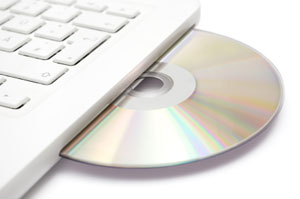
So you’ve done your homework and narrowed down your accounting software search to just a few systems. Now it’s time to test out each system and see which one works best for you. There are several ways to test out your new system. Being aware of what is available will help you choose the right method for you and your business.
View product videos
Watching a video about your potential software is a good way to get to know the system and in general, what it has to offer, including some of its features and the user interface. The downside of product videos is that you can’t search for the features you are seeking, or see how the product works. It is a great way to get a general feel for the system, which can be extremely helpful at the start of your software search.
Attend a live demonstration
Some software companies offer potential users the opportunity to join a demonstration of their software, whether it’s via the internet or in person. This can be a beneficial use of your time, since you can watch an expert navigate through the system, with the ability to ask questions along the way. After all, who is better at showing you the system than a system expert? Attending a demonstration is a must-do for the purchase of any software system!
Fully functioning trial software version
Some software vendors offer a trial version of their software for you to try out. Some software trials are fully functioning versions of the software, and others are more limited. The advantage to using a software trial version is that you can really get a feel for how the system works. However, without some training or at least familiarity with a software system, it’s nearly impossible to get a true picture of how the software really works.
In a perfect world, you would have the option to use all three of the above to make your decision. First, view a product video at the start of your software search, in order to gain familiarity with the system. After that, attend a live demonstration to get an idea if that system (how it works and its feature set) is an appropriate option for you and your business. Using these two options together can be enough to make your decision, but if you still have questions after that, installing the trial software version can really help. Just be sure that when you are in the trial version working, there is somebody at the software vendor company who is willing to help you along the way and answer any questions that may arise during your testing.

Every business seems to have some recurring transactions. Recurring payments are those you have to pay more than once, and often on a regular basis, such as monthly bills, insurance payments, rent and more. You can use the recurring payments function in Accounts Payable to streamline the process of paying monthly expenses.
Individual Recurring Transaction
Creating an individual recurring transaction involves setting up and saving the basic information on the invoice, so it can be retrieved and processed each time you need to pay that invoice/vendor. Typically you would enter a description that is familiar, so you can find the correct transaction each time you need to use it. Once you have entered all the necessary information for the individual recurring invoice, that invoice will be saved in a list of recurring transactions. When it comes time to processes the invoice, simply select it from the list, open and edit the dollar amount (if necessary), and save the transaction.
Groups of Recurring Transactions
For even more efficiency, set up your recurring transactions within a group (or batch)! For your monthly recurring transactions, set them up in a monthly recurring group, for your quarterly transactions a quarterly group, and so on. First, create the name of your transaction batch, for instance “Monthly Recurring Bills.” Set up individual transactions and assign each of them to their group. By assigning the transactions to a group, the entire group of transactions can be created easily when needed. When it comes time to run a group of invoices, you go in and change any information if needed, run those invoices, and print them along with a check.
Setting up and using recurring transactions can save you significant time!

I want to use my space in this blog post to thank the many people that help us develop and deliver quality products that meet the needs of our customers. The people I’m talking about are the partners and customers that participate in our focus groups, and offer suggestions for improvements to our products.
As we continually work to improve any of our supported products, we use a documented process that includes reviewing all of the suggestions that have been submitted by the users of that particular product. We maintain a database of those suggestions, and have several design meetings involving staff members from every appropriate department in the organization.
As we finalize the new product features, we include a group of partners and customers to help us be assured that what we are implementing in the new software is actually what the market needs. We, of course, can’t include each and every suggestion to a product in any one release, but continue to review all suggestions received by our organization.
Thanks to all that participate in this process, and keep those ideas flowing.

Accounting software programs can be purchased in a variety of ways, depending on your needs. One of them will most certainly work for you and your business.
Brick and mortar retail store
You can purchase basic accounting software programs on the shelves of retail stores. It’s convenient to put the software in your cart purchase it so easily, but keep in mind that if you have questions about the program’s specific functionality, you may have troubles getting those questions answered by the retail sales associates.
Software developer
Buying software directly from the company that developed can be beneficial because you can get your questions answered before making a purchase. You may even be able to get a personalized demonstration of the software, something that is nearly impossible for retail stores to offer. Talking to somebody who knows and understands the system, and also takes to time to understand your business, can not only bring you peace of mind, but can ensure a better accounting software program match for your business.
Online
Buyers do most of their research online these days, and therefore it might be tempting to simply go in and purchase accounting software programs online. If you decide to purchase in this way, be sure you are able to really understand how the system works and get all of your questions answered before buying. This might require communication via email or phone, but the time spent will be well worth it down the line. After all, this will be the tool used to manage your business finances!

Project tracking within your accounting software program is a great way to understand the cost of a project. It is fairly easy to set up and manage. Once set up, you track projects by attributing income and expenses to projects each time you enter them. Project tracking is not to be confused with ‘job costing’, which is a more complex function that includes the tracking of a job’s progress, timing, and other information; whereas project tracking deals mainly with the income and expense for a project. Here are the basics of project tracking, so you can decide if it’s the right thing for you to do for your business.
Setting up projects
If your accounting software includes the ability to track projects, you should be able to go into your setup options to create a new project and give it a name and/or an abbreviation. Make sure the name is easily recognizable, so it’s easy to identify during data entry. Keep in mind that you may actually have more than one project within a bigger project, so the name you give each project should reflect that. Otherwise, finding the right project can be confusing during data entry.
Assigning a project during transaction entry
Typically, once this is set up, a field within the transaction entry screen(s) will show you the projects you have available to choose from. Be sure to choose the correct project for that income or expense. If you forget to choose a project to associate with that transaction, most systems will let you edit the invoice afterward.
Getting reports by project
Most accounting systems will allow you to filter a variety of reports by project. Whether you are looking for a sales report, financial or general ledger report, use a filter within your report generation tool to include only the information that relates to your project. By filtering the reports this way, you won’t need to sort through loads of other information to get the information you are looking for.
When you are finished tracking a project and have all the information you need, many systems will allow you to mark that project inactive, keeping your list of projects to choose from accurate and easy to work with.
Once you set up and use project tracking, you might just be surprised how easy it is to keep track of even the smallest of projects. Keep in mind, that many systems also allow you to assign projects to your labor costs for a more accurate picture of complete project costs. Check your system today and give project tracking a try!